
Massages Book your massage online and save
Top 20 Massage VenuesFor more salons, check out Fresha’s list of Massage Studios.
 2/91 Dorset Road, Ferntree Gully, Ferntree Gully 3156(14)For revitalising massage and physiotherapy treatments that will have you feeling like a whole new person, visit Healthy Life Clinic in Ferntree Gully.Relaxation Massage, Chinese Massage, Therapeutic Massage, Foot Massage, Cupping
2/91 Dorset Road, Ferntree Gully, Ferntree Gully 3156(14)For revitalising massage and physiotherapy treatments that will have you feeling like a whole new person, visit Healthy Life Clinic in Ferntree Gully.Relaxation Massage, Chinese Massage, Therapeutic Massage, Foot Massage, Cupping
Yohome Massage & Foot Spa
17 / 313 Victoria St (Inside The Hive Shopping Centre), Abbotsford 3067(1)Ideally located inside The Hive Shopping Centre in Abbotsford, treating yourself to a luxurious massage has never been easier, with Yohome Massage & Foot Spa.Neck Massage, Foot Reflexology, Back Massage, Shoulder Massage, Relaxation Massage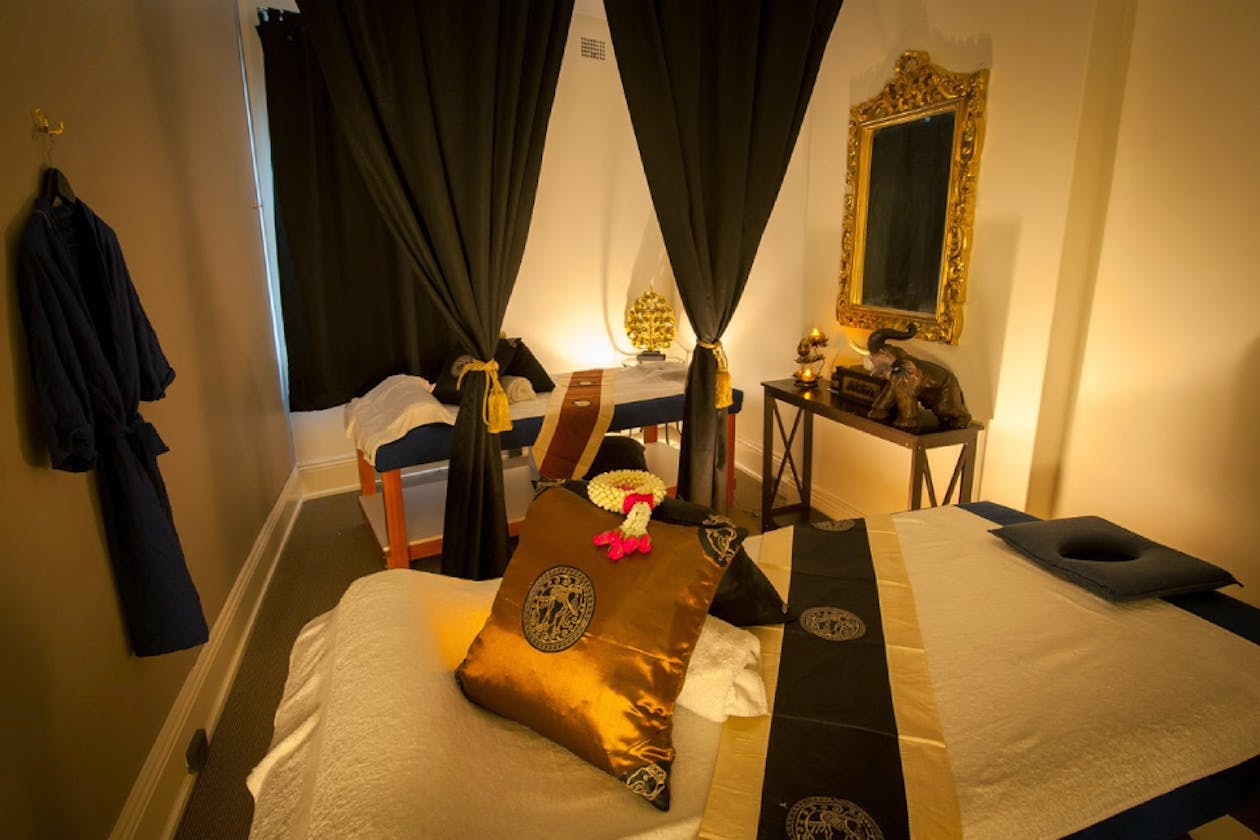
Willoughby Thai & Remedial Massage
L1 / 553 Willoughby Road, Willoughby 2068(5)Lead a healthy, active lifestyle by achieving optimal strength and flexibility at Willoughby Thai & Remedial Massage in Willoughby NSW.Foot Scrub, Foot Reflexology, Ear Candling, Neck Massage, Relaxation Massage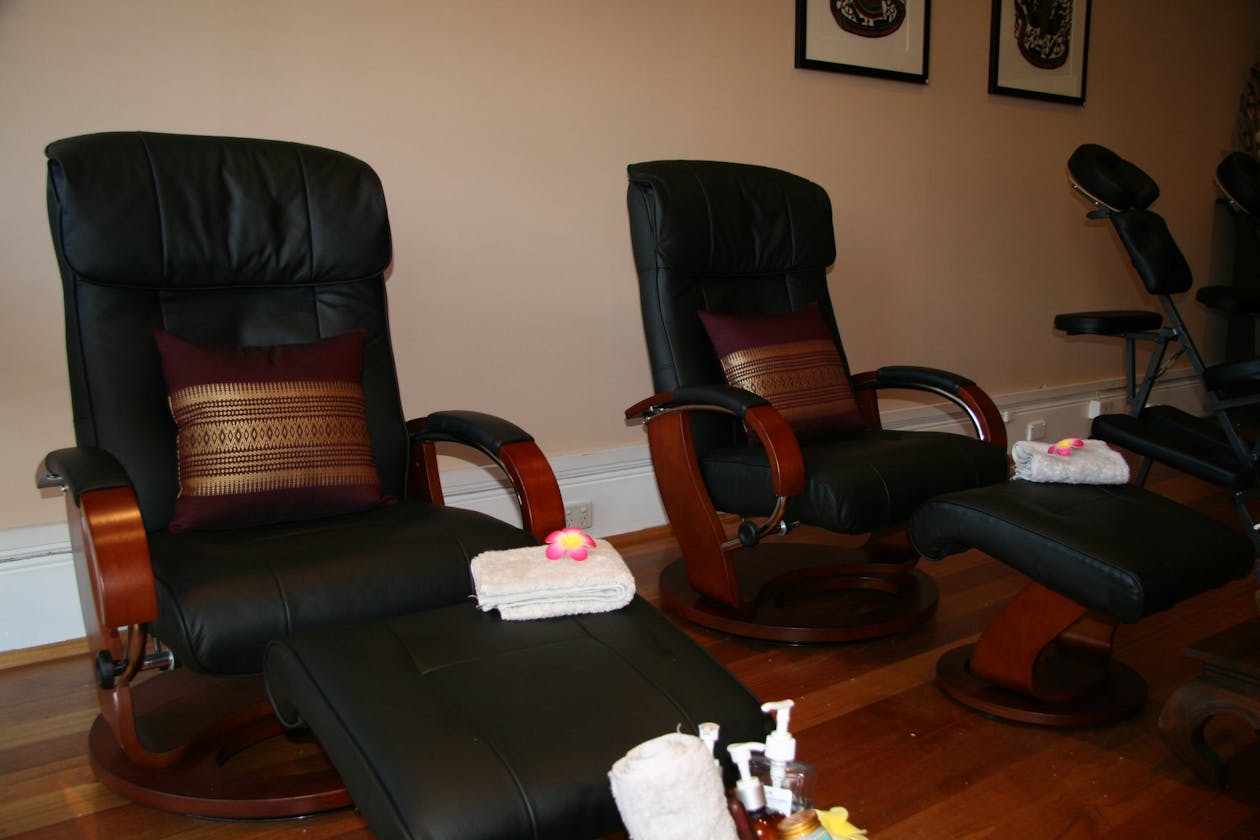
Awesome Thai Massage
221 Clarendon St , South Melbourne 3205(29)Overdue for a massage? Secure your spot at Awesome Thai Massage on Clarendon Street in South Melbourne, for a soothing and professional massage treatment.Foot Massage, Body Massage, Aromatherapy Massage, Oil Massage, Deep Tissue Massage
Paradai Thai Massage - Brighton
154 Church Street, Brighton 3186(180)Paradai Thai Massage specialises in traditional Thai techniques, offering deep tissue, stone massage therapy and more to comfort and nurture your needs.Ear Candling, Foot Spa, Spa, Body Scrub, Hot Stone Massage
Crown Street Thai Massage
600 Crown Street, Surry Hills 2010(8)Feel amazing with Crown Street Thai massage. Book in for a relaxing traditional Thai or aromatherapy massage, or remedial massage to combat deep-seated aches.Neck Massage, Head Massage, Shoulder Massage, Aromatherapy Massage, Deep Tissue Massage
Luxsa Therapy
254 Como Parade West , Parkdale 3195(64)Luxsa Therapy is an indulgent Thai massage centre. Release tensions with a range of massages including aromatherapy, oil, and traditional Thai massage.Foot Scrub, Ear Candling, Hot Stone Massage, Neck Massage, Head Massage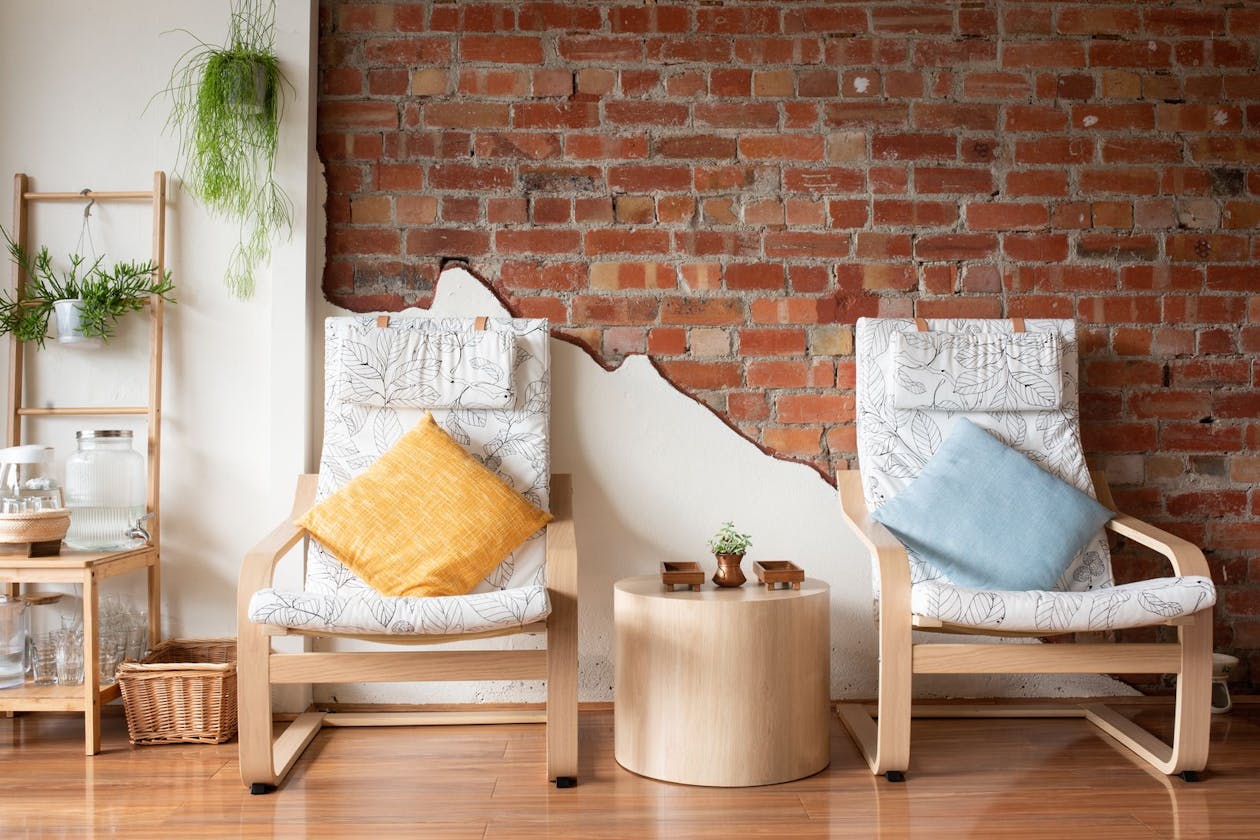
The Massage Studio
735 Nicholson Street, Carlton North 3054(284)This tranquil studio on Nicholson Street in Carlton North is home to a phenomenal team of highly trained massage therapists. Book online today.Neck Massage, Head Massage, Back Massage, Shoulder Massage, Foot Massage
Figtree Thai Massage
2/34 Princes Highway,, Figtree 2525(6)Looking to relax, unwind and recharge your batteries? Figtree Thai Massage on Princes Highway offers truly rejuvenating massage treatments. Book online.Couples Massage, Sports Massage, Foot Reflexology, Thai Massage, Remedial Massage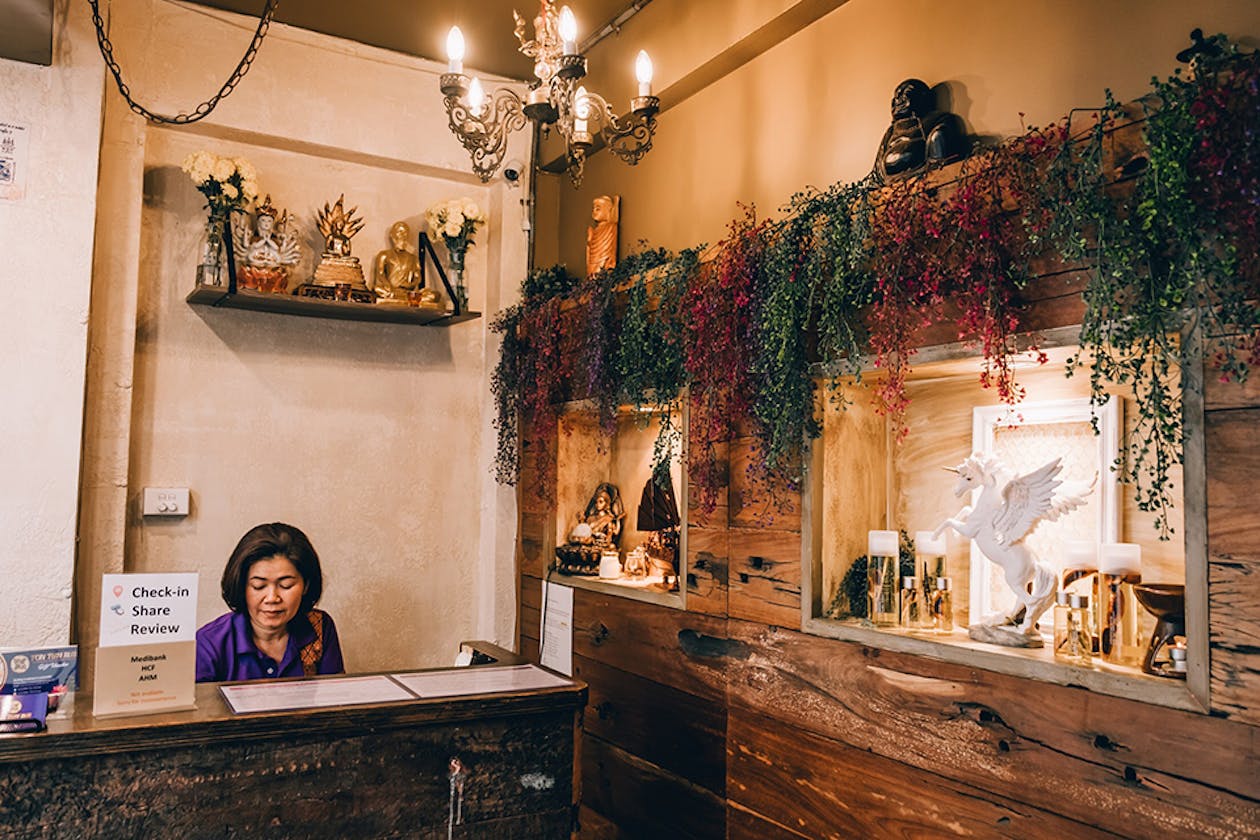
Ton Tum Rub Thai Massage and Spa
201 Victoria Street, Potts Point 2011(524)Tired, or stressed? Head to Ton Tum Rub Thai Massage and Spa. Try a Traditional Thai Massage, Aromatherapy, Hot Stone or Signature Deep Tissue Massage.Relaxation Massage, Back Massage, Foot Massage, Pregnancy Massage, Foot Reflexology
Royal Lotus Thai Massage
261 Glenferrie Road, Malvern 3144(82)Escape from our busy world with Royal Lotus Thai Massage. Enjoy some 'you' time with a traditional Thai massage, relaxing warm oil, or pregnancy massage.Neck Massage, Head Massage, Leg Massage, Back Massage, Shoulder Massage
Elwood Thai Massage
77 Glen Huntly Road, Elwood 3184(153)Escape your stresses, aches and pains with Elwood Thai Massage. Their fully trained therapists specialise in traditional northern Thai techniques.Aromatherapy Massage, Sports Massage, Reflexology, Neck Massage, Head Massage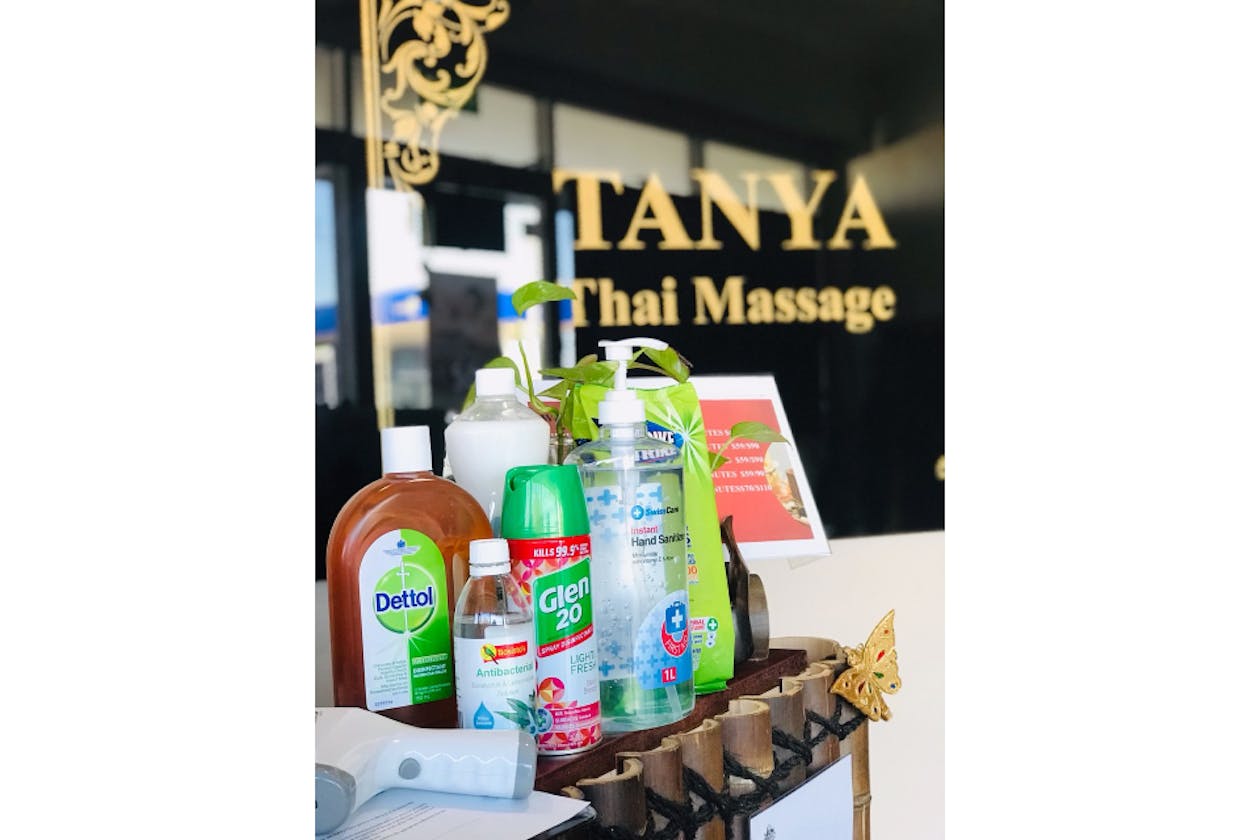
Tanya Thai Massage
475 Cabramatta Road West, Cabramatta West 2166(8)Tanya Thai Massage on Cabramatta Road West is your ideal destination for an authentic traditional Thai massage that will restore flexibility and comfort.Aromatherapy Massage, Reflexology, Foot Massage, Thai Massage, Deep Tissue Massage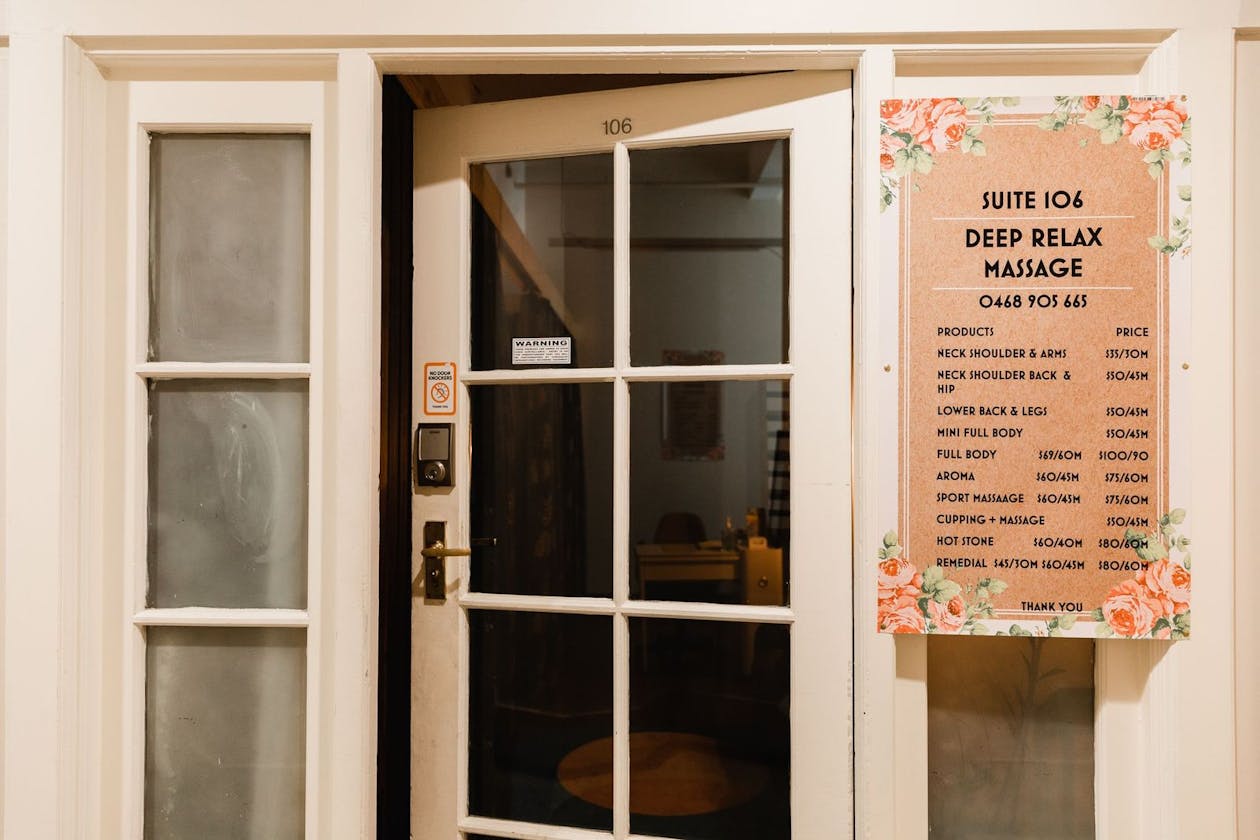
Deep Relax Massage On Pitt Street
Suite 106, Level 1 / 250 Pitt St, Sydney CBD 2000(41)For soothing and revitalising massage treatments in the heart of Sydney CBD, Deep Relax Massage on Pitt Street has got you covered. Book today.Cupping, Leg Massage, Hot Stone Massage, Aromatherapy Massage, Sports Massage
Queens Thai Massage
Shop 1 / 104 Railway Street, Corrimal 2518(21)Queens Thai Massage is a tranquil authentic Thai massage studio. Let your worries melt away with traditional Thai, remedial, oil, or deep tissue massage.Foot Massage, Hot Stone Massage, Swedish Massage, Oil Massage, Thai Massage
Aura Wellness
561A North Road, Ormond 3204(4)For all things massage head straight to Aura Wellness. Choose from Remedial, Relaxation, and Hot Stone Massage, or specialised Pregnancy Massage.Pregnancy Massage, Foot Spa, Couples Massage, Head Massage, Back Massage
Swan Beauty Massage And Spa
UFC Gym 466 West Botany Street, Rockdale 2216(17)For all things massage, head straight to Swan Beauty Massage and Spa. Try out the Deep Tissue, Relaxation or Pregnancy Massage, and authentic Thai Massage.Cupping, Neck Massage, Pregnancy Massage, Relaxation Massage, Back Massage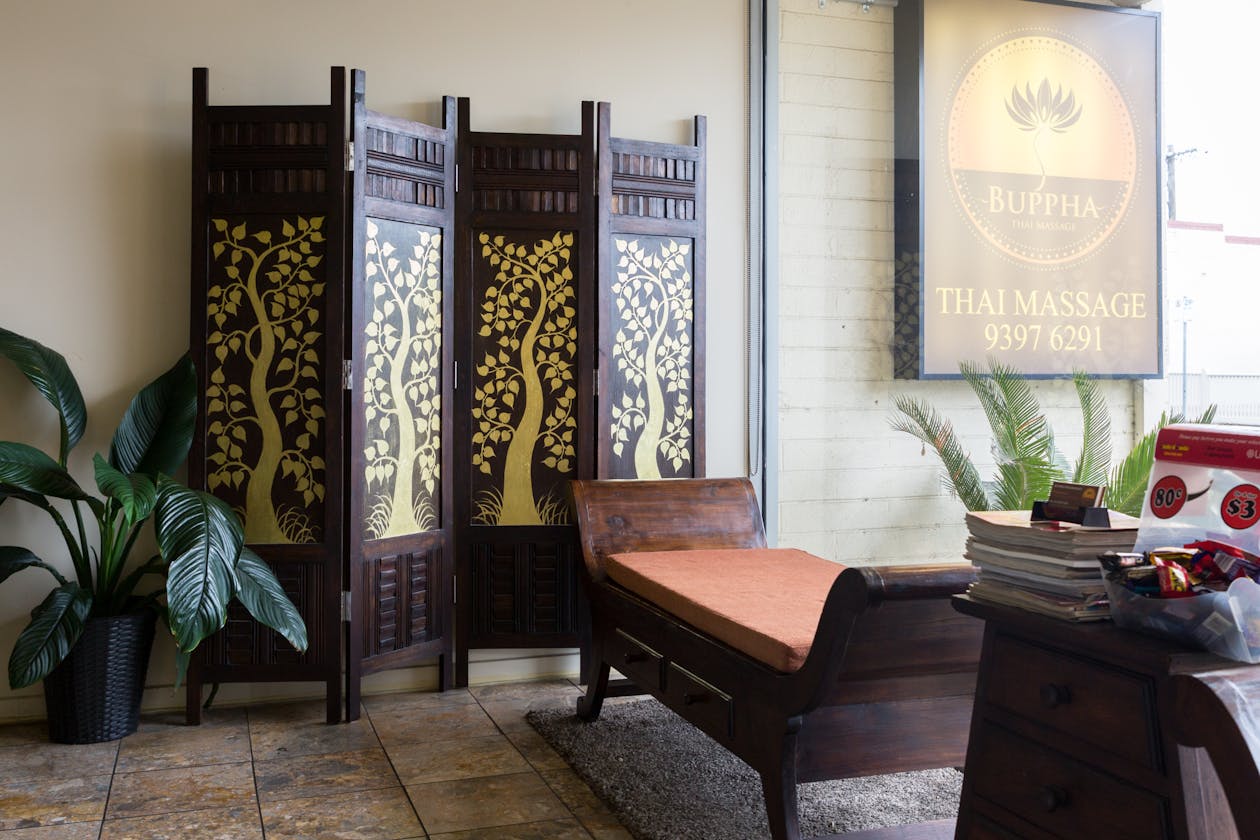
Buppha Thai Massage
105 Douglas Parade, Williamstown 3016(258)Buppha Thai Massage offers affordable authentic Thai massage, incorporating the use of hands, legs and knees to treat sore muscles to aid relaxation.Hot Stone Massage, Reflexology, Aromatherapy Massage, Neck Massage, Oil Massage
Thai Siam Thai Massage
Shop 12 / 23 Norton Street (Inside the Italian Forum), Leichhardt 2040(18)Head to Thai Siam Thai Massage for the ultimate traditional Thai massage. Relax with an Oil Massage, Deep Tissue Massage, Hot Stone Massage or healing Remedial Massage.Remedial Massage, Hot Stone Massage, Oil Massage, Thai Massage, Deep Tissue Massage
Harmony Relaxation Massage
401 Hampton St, Hampton 3188(18)Harmony Relaxation Massage specialises in deep tissue, sports massage, hot stone massage, reflexology, cupping, and foot pampering.Foot Reflexology, Reflexology, Chinese Massage, Deep Tissue Massage, Oil Massage
Massage Bookings in Melbourne, Sydney and Across Australia
Bookwell allows you to book your next massage with your favourite venues in Sydney, Melbourne, and all over Australia.
Massage has been around for millennium. Some of our most common everyday activities involve massage in one form or another. The reassuring caress of a mother to her baby or how one consoles a troubled friend. Even a big bear hug involves gentle stroking or patting on the back. Only the most cold and isolated of humans can survive devoid of human touch.
Nobody will argue that receiving a massage is one of life’s most pleasurable sensations. However, the familiar singular therapeutic practice that is most common today, massage is a recent phenomenon. In fact, as medical practice, ancient texts reveal massage to have been widely used. Dated circa 1800 BC, a Chinese medical text called Con-Fu of the Toa-Ts describes in detail the purpose and methods of therapeutic massage. Reflexology has been depicted in Egyptian hieroglyphs, while India was developing the philosophy of Ayurveda which is widely practiced today. Moving on to the Greeks and Romans, massage was used widely as sports medicine and joint ailments.
Unfortunately, even in antiquity not all massage practice was “respectable” and the negative implication of massage took a nose dive during the Middle Ages. Behavior considered wanton or depraved were unacceptable and things didn’t improve much until the 19th century. Thanks to a Swede by the name of Pehr Heinrick Ling and his work with athletes, massage regained some of its respectability. Regarded as the “father of modern massage” his techniques are the foundation of European massage practice as we know it today.
Since the early 20th century, massage as physical and rehabilitative therapy has been widely practiced in Australia and is often recommended adjuvant medical therapy. Still, the myriad of massage types available can often seem more confusing than helpful. For the uninformed, a deep tissue massage is more pain than pleasure, while a relaxing aromatherapy massage does little to help severe joint pain.
To help you choose the proper therapist, spa or practice, here is a rundown of the most common forms of massage. And the less common, too.
Swedish
Gentle and soothing using long and smooth strokes. Ideal for relaxation and the best choice for first timers.
Deep Tissue
Widely used for chronically painful or tight muscles, Deep Tissue targets deeper layers of muscle and connective tissue with slower strokes and friction techniques. You might be sore for a day or two afterward.
Shiatsu
A Japanese practice using a rhythmic sequence of localised pressure on acupuncture meridians. Relaxing yet firm without the accompanying soreness of deep tissue.
Reflexology
A complex system of applying pressure to points of the foot which correspond to organs and body systems. Ideal for those who stand on their feet all day or experience pronounced foot pain.
Aromatherapy
Most commonly accompanying Swedish massage, the therapist adds one or more scented plant oils tailored to a client’s need. These essential oils can promote relaxation, relieve stress, promote emotional balance or give a burst of energy.
Hot Stone
By applying heated smooth stones to certain points of the body, muscles can be loosened and energy centres return to a balanced state. Comforting yet therapeutic, it is great for relieving tension with a lighter pressure.
Thai
Combining yoga and gentle pressure point therapy, the practitioner moves and stretches the client to reduce stress and improve flexibility and range of motion. It can be quite energising with many physical benefits.
Sports
Combining rapid strokes with facilitated stretching, Sports Massage is most common among athletes and those who work out often or injured. The attention is on healing, preventing further injury and improving performance. Pregnancy – An increasingly popular practice that requires special certification. Designed to decrease swelling, relieve aches and pains, and relieve anxiety and depression.
For those seeking something a bit out of the ordinary, below are just a few of the wide array of exotic and advanced options available.
Lomi Lomi
A type of Hawaiian massage becoming more widely practiced. Long and fluid strokes emulating gentle ocean waves, Lomi Lomi is performed and intended to release a loving energy and aid emotional release.
Craniosacral Therapy
An extra light touch releases cerebrospinal fluid that surrounds and cushions the brain and spinal cord from skull to sacrum. Migraines and learning disabilities are but a few of the conditions thought to benefit.
Reiki
A Japanese technique based on channeling life force energy to revitalise, heal, and soothe. Accomplished with light or “near” touches to balance energy flow.
Tui Na
Also called Tunia or Tui Na An Mo, a traditional Chinese method to treat illnesses and injuries, even in children. Like other forms of Asian massage, this utilises life force energy systems of the body.
Watsu
A type of Zen Shiatsu performed in comforting warm water. The water massages and supports the body while the therapist guides you in continuous stretching motions. The warm water helps decrease resistance to the stretches and helps loosen muscles.
Venik
Apparently not for the faint of heart, the Venik (sometimes called Platza) is performed in traditional Russian bathhouses called banyas. With the aid of a leafy birch or oak tree twig, Venik is intended to improve circulation and metabolism, detoxify, and intensify skin capillary activity.
Indulge in an elaborate Moorish hamman or retreat to a Balinese inspired sanctuary. From urban chic wellness clinics and grand European luxury spas, to spas where you could swear you were in a Thai temple. Bookwell is your premier source for locating and booking the massage or treatment that is exactly right for you.
Book Massage in your city
- Adelaide
- Albany
- Albury
- Alice Springs
- Ararat
- Ballarat
- Bathurst
- Benalla
- Bendigo
- Blue Mountains
- Brisbane
- Broome
- Bunbury
- Bundaberg
- Burnie
- Cairns
- Canberra
- Central Coast
- Cobram
- Coffs Harbour
- Colac
- Darwin
- Devonport
- Dubbo
- Echuca
- Geelong
- Geraldton
- Gippsland
- Gladstone
- Gold Coast
- Goulburn
- Hervey Bay
- Hobart
- Horsham
- Inverell
- Kalgoorlie
- Launceston
- Lithgow
- Mackay
- Maitland
- Mansfield
- Melbourne
- Mildura
- Mornington Peninsula
- Mount Gambier
- Mount Isa
- Newcastle
- Northern NSW
- Orange
- Perth
- Port Lincoln
- Port Macquarie
- Regional NSW
- Regional NT
- Regional QLD
- Regional SA
- Regional Tasmania
- Regional VIC
- Regional WA
- Rockhampton
- Shepparton
- Sunshine Coast
- Swan Hill
- Sydney
- Tamworth
- Taree
- Toowoomba
- Torquay
- Townsville
- Wangaratta
- Warrnambool
- Warwick
- Whitsundays
- Wodonga
- Wollongong
More Massage treatments on Bookwell
- Acupressure
- Aromatherapy Massage
- Ayurvedic Massage
- Back Massage
- Balinese Massage
- Body Massage
- Bowen Therapy
- Chinese Massage
- Corporate Massage
- Couples Massage
- Cupping
- Deep Tissue Massage
- Dry Brushing
- Face Massage
- Foot Massage
- Foot Reflexology
- Four Hands Massage
- Head Massage
- Hot Stone Massage
- Indian Massage
- Leg Massage
- Lomi Lomi Massage
- Lymph Drainage
- Myofascial Release
- Myotherapy
- Neck Massage
- Oil Massage
- Pregnancy Massage
- Relaxation Massage
- Remedial Massage
- Rolfing
- Sciatica Treatment
- Shiatsu
- Shoulder Massage
- Sports Massage
- Swedish Massage
- Thai Massage
- Therapeutic Massage
- Trigger Point Therapy
Treatment guides

Everything you need to know about Thai massages

Everything you need to know about Swedish massage
